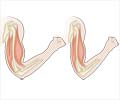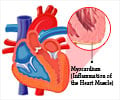In diabetics with low muscle mass, mortality risk isn't linked to frailty, blood sugar, or microvascular issues; it's directly tied to muscle loss.

Annual Meeting of the European Association for the Study of Diabetes (EASD)
Go to source). This association is independent of frailty, glycemic control and the microvascular complications retinopathy (damage to the blood vessels of the retina) and nephropathy (kidney disease), the analysis of data on US adults found.
Unraveling the Relationship Between Sarcopenia, Diabetes, and Cardiovascular Disease
Sarcopenia – age-related loss of muscle mass and strength – was known to be associated with cardiovascular disease (CVD) and mortality in individuals with diabetes. However, it wasn’t clear to what extent the relationship was being influenced by their blood sugar control or by complications of their diabetes. There was also a lack of consensus on sarcopenia’s impact on cardiovascular disease and mortality in people with diabetes.‘Low muscle mass was linked to all-cause mortality and cardiovascular disease death, regardless of HbA1c levels and the presence of microvascular complications. #sarcopenia #heartdisease #diabetes ’





To find out more, Dr. Jae Myung Yu and Dr. Shinje Moon, of Hallym University, Seoul, Republic of South Korea, and colleagues, used data from the National Health and Nutrition Examination Survey (NHANES) on 1,514 adults with diabetes (age >20 years) in the US. 196/1,514 participants (55.6% female) had low muscle mass (ASMI <7 kg/m2 in men or <5.5 kg/m2 in women). The participants with low muscle mass had an average age of 63.5 years and an average diabetes duration of 14.5 years. (No distinction was made between type 1 and type 2 diabetes.)
1,318 participants (48.3% female) had normal muscle mass. Their average age was 54 years and average diabetes duration was 10.4 years.
The NHANES data also included information about a range of other characteristics, including smoking status, alcohol consumption, microvascular complications, HbA1c (a measure of blood sugar control) and frailty.
The participants were followed up for an average of 9.3 years. There were 413 deaths from any cause during this time (106 low muscle mass and 307 normal muscle mass). 147 of these deaths were from CVD (42 low muscle mass, 105 normal muscle mass.)
Advertisement
The results were adjusted for age, sex, race/ethnicity, smoking status, alcohol consumption, central obesity, history of cancer, hypertension (HTN), dyslipidemia (unhealthy levels of blood fats), past CVD events including heart attacks, duration of diabetes, microvascular complications and HbA1c.
Advertisement
The study’s authors conclude: “Our results suggest that the increased risk of death in individuals with diabetes who have low muscle mass isn’t mediated or influenced by frailty, poor blood sugar control or microvascular complications but due to the loss of muscle itself. More research is needed to determine just how sarcopenia increases the risk of death.”
Dr. Yu adds: “For most people with type 2 diabetes and overweight or obesity, guidelines recommend nutrition, physical activity and behavioral therapies to achieve and maintain weight loss.
“However, there are limitations to assessing treatment goals based on weight loss alone because body weight cannot distinguish between fat and muscle mass and so does not reveal if someone is sarcopenic.
“It is important to consider body composition when treating obesity and managing weight in people with diabetes.”
Reference:
- Annual Meeting of the European Association for the Study of Diabetes (EASD) - (https://www.easd.org/annual-meeting/easd-2023.html)
Source-Eurekalert















